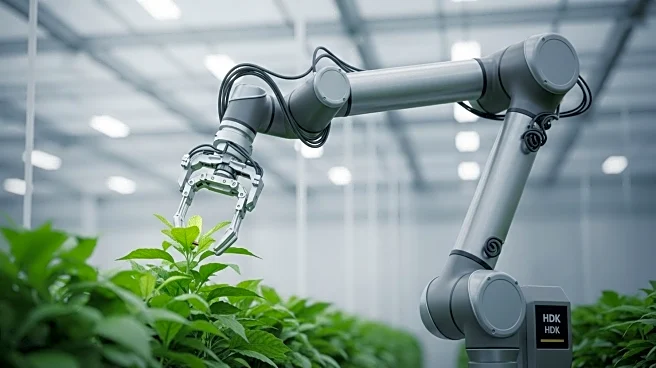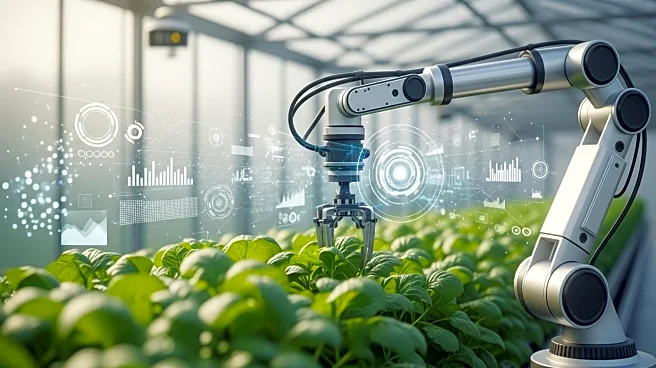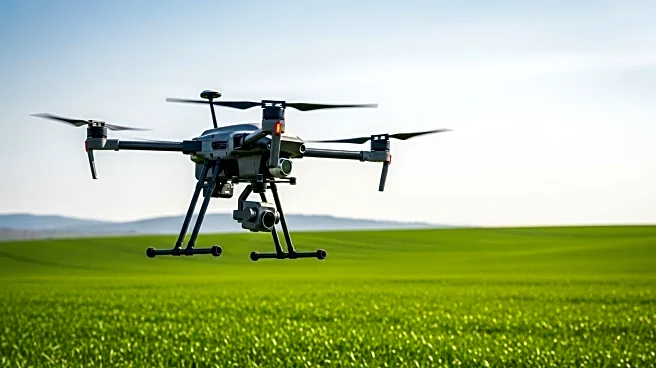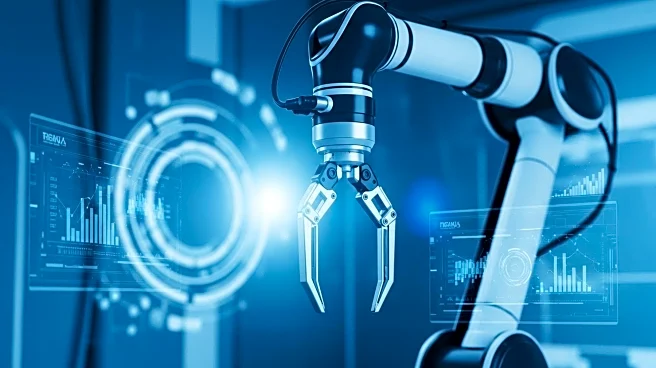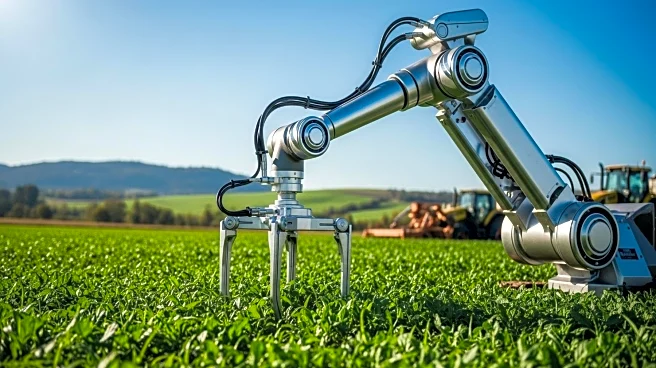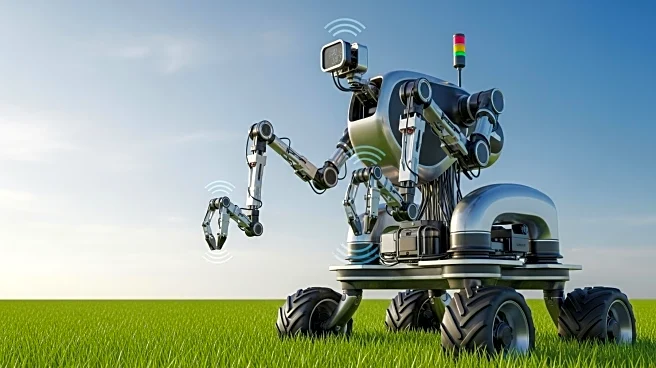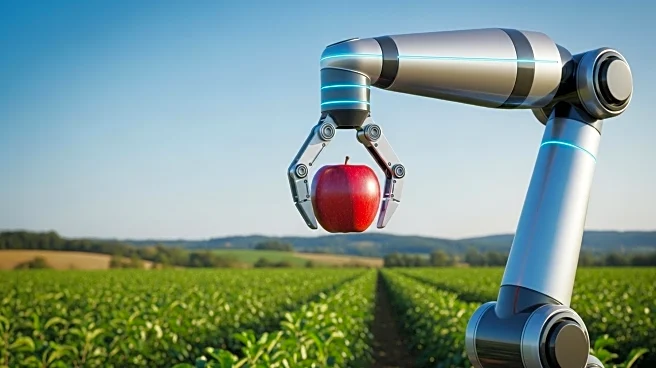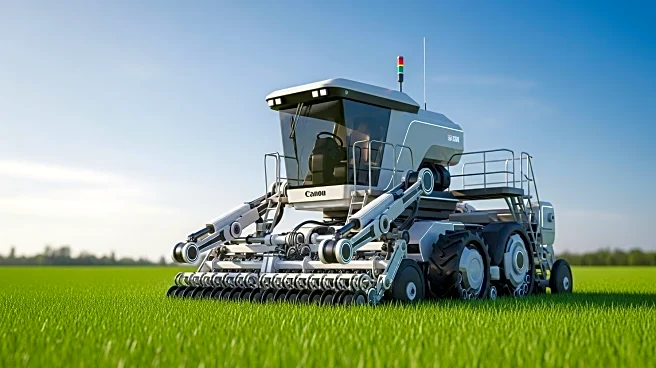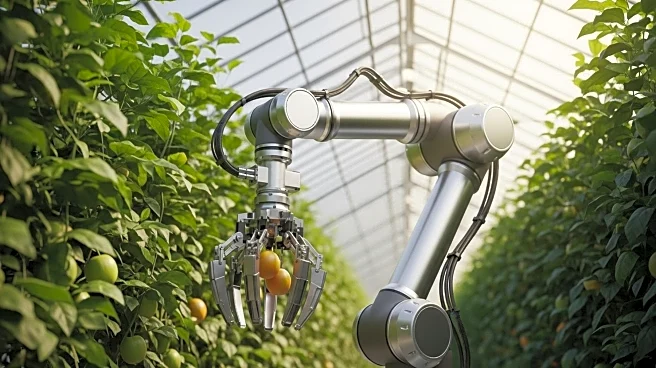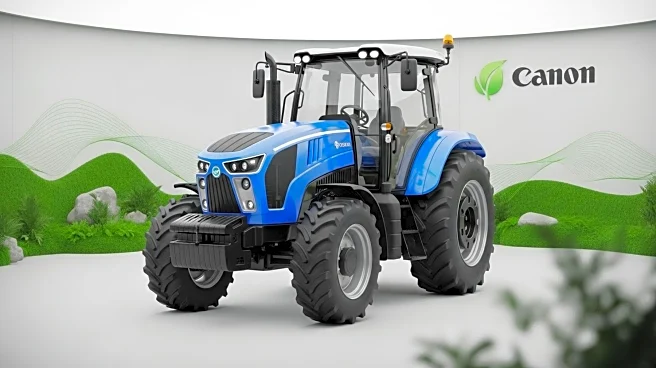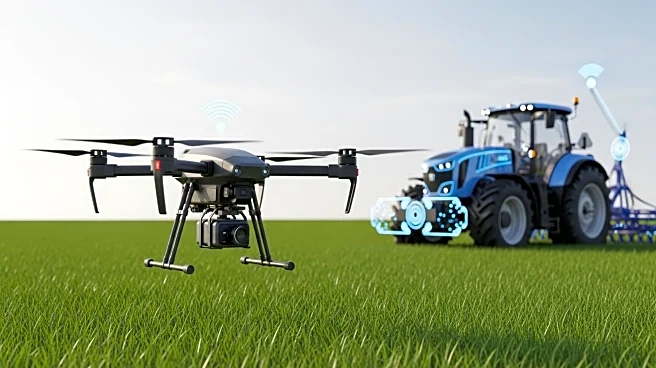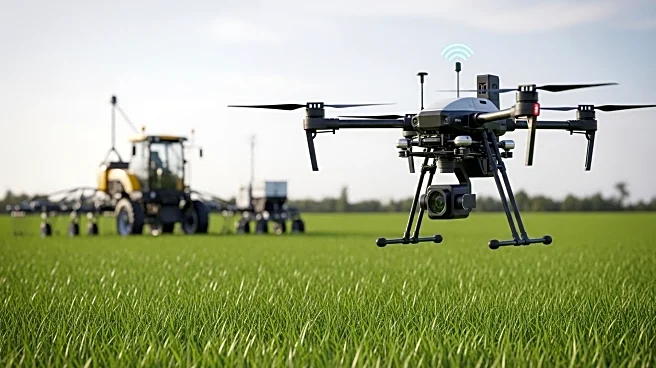What is the story about?
What's Happening?
The agriculture robots market is experiencing significant growth, with projections indicating it will reach USD 76.46 billion by 2032, growing at a compound annual growth rate (CAGR) of 20.70% from 2024 to 2032. This surge is driven by the increasing need for automation in agriculture due to labor shortages, rising food demand, and the push for sustainable farming practices. Agricultural robots, or 'agribots', are being utilized for various tasks such as planting, harvesting, and monitoring crops. These robots employ advanced technologies like AI, GPS, and machine learning to enhance efficiency and productivity in farming operations. North America currently leads the market due to its advanced farming infrastructure and significant R&D investments, while the Asia-Pacific region is the fastest-growing market, driven by rising food demands and government support.
Why It's Important?
The expansion of the agriculture robots market is crucial as it addresses several pressing challenges in the agricultural sector, including labor shortages and the need for increased productivity to meet global food demands. The adoption of agribots can lead to higher crop yields, reduced waste, and optimized resource usage, which are essential for sustainable agriculture. This technological advancement also supports the economic growth of regions investing in agri-tech, such as North America and Asia-Pacific. Companies like John Deere and Trimble are at the forefront of this innovation, contributing to the development of more efficient farming practices. The growth of this market could significantly impact food security and sustainability efforts worldwide.
What's Next?
As the agriculture robots market continues to grow, further advancements in AI and machine learning are expected to enhance the capabilities of these robots, making them more efficient and cost-effective. Governments and private sectors are likely to increase investments in agri-tech to support this growth. Additionally, the development of affordable robotic solutions for small and mid-sized farms could expand the market's reach, particularly in emerging economies. The focus on sustainability and precision farming will likely drive further innovation and adoption of agricultural robots.
Beyond the Headlines
The rise of agricultural robots also raises ethical and environmental considerations. While these technologies promise increased efficiency, there is a concern about the potential impact on employment in rural areas. Moreover, the reliance on technology in farming could lead to cybersecurity risks and environmental challenges, such as soil health degradation due to over-dependence on machinery. Addressing these issues will be crucial as the market continues to evolve.
AI Generated Content
Do you find this article useful?
